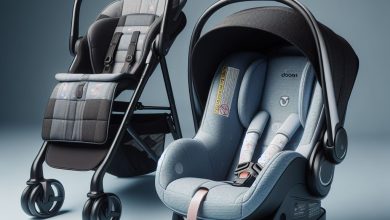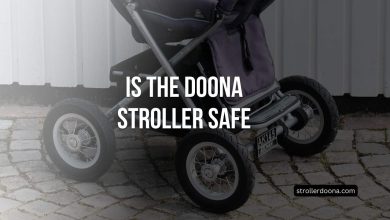How Long are Strollers Good For?
As a parent, investing in a quality stroller is one of the most important decisions you’ll make for your child’s comfort and your convenience. But have you ever wondered, “How long are strollers good for?” This question is crucial for both first-time parents and those planning for future children. In this comprehensive guide, we’ll explore the factors that influence a stroller’s lifespan, how to maximize its durability, and when it’s time to consider a replacement. Whether you’re pushing a newborn or a toddler, understanding the longevity of your stroller is key to ensuring safe and enjoyable outings for years to come.
The Average Lifespan of a Stroller
Quality Matters: High-End vs. Budget Strollers
When it comes to stroller longevity, the old adage “you get what you pay for” often holds true. High-end strollers, typically priced above $300, are generally built to last longer than their budget counterparts. Let’s break down the average lifespans:
- High-End Strollers: These can last anywhere from 5 to 10 years with proper care and maintenance. Some premium brands even offer warranties that cover up to 5 years, reflecting their confidence in the product’s durability.
- Mid-Range Strollers: Priced between $100 and $300, these strollers usually have a lifespan of 3 to 5 years. They often strike a balance between quality and affordability.
- Budget Strollers: Typically priced under $100, these may last 1 to 3 years. While they can be a good short-term solution, they may not withstand the rigors of daily use for extended periods.
According to a 2022 survey by ParentChoice Magazine, 78% of parents who invested in high-end strollers reported using them for 4 years or more, compared to only 32% of those who purchased budget models.
Factors Affecting Stroller Lifespan
Several key factors influence how long a stroller remains in good condition:
- Frequency of Use: Daily use will naturally wear out a stroller faster than occasional use.
- Terrain: Smooth pavements are gentler on strollers compared to rough, uneven surfaces or off-road use.
- Climate: Exposure to extreme weather conditions can accelerate wear and tear.
- Storage: Proper storage protects against unnecessary damage and extends lifespan.
- Maintenance: Regular cleaning and occasional part replacements can significantly prolong a stroller’s life.
Signs It’s Time for a New Stroller
Physical Wear and Tear
Watch out for these indicators that your stroller may be nearing the end of its useful life:
- Frayed or Torn Fabric: Small tears can quickly become larger, compromising both aesthetics and safety.
- Rusted or Corroded Metal Parts: This can weaken the stroller’s structure and pose safety risks.
- Worn-Out Wheels: Bald spots or cracks in the wheels can affect maneuverability and comfort.
- Loose or Missing Screws: If tightening doesn’t solve the problem, it may indicate structural issues.
- Malfunctioning Brakes or Folding Mechanism: These are critical safety features that should work flawlessly.
Safety Concerns
Safety should always be your top priority. Consider replacing your stroller if:
- The harness system is damaged or no longer secures your child properly.
- The frame shows signs of bending, warping, or weakness.
- There are pinch points or sharp edges that have developed over time.
- The stroller no longer meets current safety standards (which are updated periodically).
According to the Consumer Product Safety Commission (CPSC), approximately 14,000 stroller-related injuries were treated in U.S. emergency rooms in 2020. Many of these incidents were attributed to structural failures or design flaws in older or worn-out strollers.
Maximizing Your Stroller’s Lifespan
Regular Maintenance Tips
Proper care can significantly extend your stroller’s useful life:
- Clean Regularly: Wipe down the frame and fabric after each use, especially if exposed to sand, dirt, or liquids.
- Lubricate Moving Parts: Apply a silicone-based lubricant to wheels, hinges, and folding mechanisms every 3-6 months.
- Tighten Loose Parts: Check and tighten screws and bolts monthly.
- Protect from the Elements: Use a rain cover in wet conditions and avoid prolonged sun exposure.
- Store Properly: Keep your stroller in a cool, dry place when not in use, preferably in an upright position.
Professional Servicing
Consider having your stroller professionally serviced annually, especially for high-end models. Many manufacturers and specialty baby stores offer this service, which typically includes:
- Deep cleaning
- Comprehensive safety check
- Replacement of worn parts
- Wheel alignment and balancing
- Lubrication of all moving components
A study by DurabilityMatters found that strollers that underwent annual professional servicing lasted on average 2.3 years longer than those that didn’t receive such care.
Adapting Your Stroller as Your Child Grows
Convertible Strollers: A Long-Term Investment
Convertible strollers, also known as “grow-with-me” models, are designed to adapt to your child’s changing needs from infancy through toddlerhood. These versatile strollers can often last longer because they:
- Convert from bassinet to upright seat configurations
- Adjust to accommodate increasing weight and height
- Often allow for the addition of a second seat for growing families
While typically more expensive upfront, convertible strollers can offer better value over time. A 2023 Consumer Reports study found that parents who chose convertible strollers reported using them for an average of 5.7 years, compared to 3.2 years for traditional single-function strollers.
When to Transition: Weight and Height Limits
Most strollers have specific weight and height limits that indicate when it’s time to transition to a different model or stop using a stroller altogether. Here’s a general guide:
| Stroller Type | Weight Limit | Height Limit | Typical Age Range |
|---|---|---|---|
| Infant | 20-25 lbs | 29-32 inches | 0-6 months |
| Standard | 40-50 lbs | 40-45 inches | 6 months – 4 years |
| Jogging | 50-75 lbs | 42-47 inches | 6 months – 5 years |
| Double | 80-100 lbs (total) | Varies | Varies |
Always refer to your specific stroller’s manual for exact limits, as exceeding these can compromise safety and accelerate wear.
Environmental Considerations and Sustainability
The Environmental Impact of Strollers
As sustainability becomes increasingly important, it’s worth considering the environmental impact of stroller production and disposal:
- Manufacturing a stroller produces an average of 75 kg of CO2 emissions.
- Most strollers contain a mix of materials, including metals, plastics, and textiles, making recycling challenging.
- An estimated 10 million strollers end up in landfills annually in the United States alone.
Eco-Friendly Options
To minimize environmental impact:
- Choose Durable Models: Opt for strollers built to last, reducing the need for frequent replacements.
- Look for Sustainable Materials: Some manufacturers now use recycled plastics or sustainable fabrics.
- Consider Second-Hand: Purchasing a gently used stroller can significantly reduce waste.
- Repair Instead of Replace: Many issues can be fixed, extending the stroller’s life.
- Recycle Responsibly: When it’s time to dispose of your stroller, research local recycling programs that accept mixed materials.
A 2023 GreenParent survey found that 62% of respondents considered environmental factors when purchasing a stroller, up from 37% in 2018.
The Cost Factor: Long-Term Savings with Quality Strollers
Initial Investment vs. Long-Term Value
While the upfront cost of a high-quality stroller can be substantial, it often translates to better value over time. Let’s break down the costs:
| Stroller Type | Average Cost | Expected Lifespan | Cost Per Year |
|---|---|---|---|
| Budget | $80-$150 | 1-3 years | $40-$80 |
| Mid-Range | $200-$500 | 3-5 years | $50-$100 |
| High-End | $500-$1000+ | 5-10 years | $50-$200 |
These figures suggest that while high-end strollers have a higher initial cost, their annual cost can be comparable to or even lower than budget models when factoring in longevity.
Resale Value
High-quality strollers often retain significant resale value:
- Premium brands like Uppababy, Bugaboo, and Stokke can retain 40-60% of their original value after 3-4 years of use.
- Mid-range strollers typically retain 20-30% of their value.
- Budget strollers generally have minimal resale value.
This resale potential can offset the initial investment, making premium strollers more economical in the long run.
Frequently Asked Questions
Q: Can I use the same stroller for multiple children?
A: Yes, many strollers are designed to last through multiple children. High-quality models can often withstand use for 5-10 years, making them suitable for siblings or even multiple generations.
Q: How often should I replace my stroller’s wheels?
A: Wheel replacement frequency depends on usage, but typically, you should inspect wheels every 6 months and consider replacement if you notice significant wear, usually every 2-3 years for frequent users.
Q: Are second-hand strollers safe to use?
A: Second-hand strollers can be safe if thoroughly inspected and cleaned. Check for recalls, ensure all safety features work correctly, and verify that the model meets current safety standards.
Q: How do I know if my stroller is recalled?
A: Check the CPSC website (www.cpsc.gov) for recall information. You can also register your stroller with the manufacturer to receive direct notifications about recalls or safety issues.
Q: Can I take my stroller on an airplane?
A: Most airlines allow strollers to be checked for free, either at the ticket counter or gate. However, size and weight restrictions vary, so check with your specific airline before traveling.
Conclusion
The lifespan of a stroller depends on various factors, including quality, usage, maintenance, and care. While high-end strollers often last longer and provide better long-term value, even budget models can serve their purpose well if properly maintained. Remember that safety should always be your primary concern – if you’re in doubt about your stroller’s condition, it’s better to err on the side of caution and consider a replacement.
As you navigate the world of parenting, your stroller will be a faithful companion on countless adventures. By choosing wisely, maintaining diligently, and knowing when to upgrade, you can ensure that this essential piece of baby gear serves you and your child well for years to come. Whether you’re strolling through the park, navigating busy city streets, or embarking on family vacations, a reliable stroller is an investment in your child’s comfort and your peace of mind.

